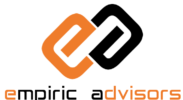Every management system requires some form of documentation, after all, if it isn’t documented then it wasn’t done. OSH management systems are no different. Good record keeping is paramount to the success of any system as it forms a basis for determining current performance and in turn improvement opportunities. However, all these documents present challenges of data management. Access to critical information is a tedious task of sifting through mounds of paperwork which is both time consuming and inefficient. There is a great migration from paper to digital platforms due to accessibility of mobile technology which has been accelerated by the global Covid-19 pandemic.
Digitisation in this context can be defined as information that can be processed by a computer. The primary source of this information can be digital (e.g. email, Word doc, Excel spreadsheet, eForms) or converted from hardcopy (e.g. scanned documents). As a country, the government has made efforts to digitise many services through the E citizen platform. There is also the much publicised digitisation of Land Registry to improve service delivery and transparency on the thorny issue of land.
For OSH management, digitisation improves monitoring of key performance indicators which increases performance of an organisations core business through:
· Elimination data capture errors
· Creating audit trails
· Speeding up time required to close recommendations
· Verification of the data source
· Improving accessibility to information/ transparency
· Integrating all business functions to the OSH management systems
· Automated measure of success of the Management system
The above advantages are realised by the key features exhibited by OSH management software which include:
Dashboard: As in a vehicle, the dashboard feature provides summary of the performance (or non performance) of all required analytics. This is based on the data captured from all key performance indicators.
OSH Compliance Matrix: This feature enables safety personnel to be up to date with various statutory requirements e.g. renewal of operational licenses, Periodic Plant Examinations etc. Digital platforms notify the user of any requirement that is due to facilitate early planning. This works to ensure compliance with OSH regulations and tendering requirements.
PPE Management: This keeps an inventory of the correct PPE required in the workplace. The user is kept informed about the variables which ensure every piece of PPE issued to workers is indeed personal and not one size fits all.
Chemical Management: Other than inventory management, Chemical management encompasses the Storage, Handling, use and proper disposal of chemicals. The SDS for all chemicals can be accessed with this feature and this aims to meet regulatory requirements too. Good chemical management will ensure efficient and safe use of chemicals and cut wastage.
OSH Inspections: Workplace inspections form a core of any OSH Management system. They help identify hazards and existing controls in order to inform additional corrective measures. A good OSH management software must include customisable inspection checklists. This enable the end user to modify the parameters to fit their workplace. The data collected is easily sharable and this promotes fast turnaround of highlighted recommendations. With mobile Apps, workers are also able to report hazards in real time to a centralised database thus empowering them to be OSH champions.
Training: Training is at the core of any management system. It is important for organisations to build capacity of the employees to empower them execute the corporate vision. A good software should enable the user prepare material, track, schedule, undertake and assess the effectiveness of training undertaken.
Incident Management: This forms part of lagging indicators. A good software must include an incident analysis tool which automatically generates incident reports with the required degree of detail.
Integration: A good software is able to cross share information amongst all users to give a wholesome view of the organisation. This breaks down any geographical barriers that hinder information sharing in hard copy format.
The benefits of a good OSH management system warrant a full article, however there is no doubt digitisation helps in its implementation. Seeing how the above features form a job description for most OSH practitioners, it is important that individuals keep abreast of the disruptive technologies that are changing how OSH is managed. Early adoption will ensure smooth transition and ultimately greater efficiency in performing duties.
The top management should be aware of the organisations capacity to transition into digitisation and to meet or exceed the requirements both in skill and equipment.
How have you integrated digitisation into your occupation? Contribute to the discussion on the comment section below.
Works Cited
Change Factory. (n.d.). The Benefits of Digitisation. Retrieved from Change Factory: https://www.changefactory.com.au/our-thinking/articles/benefits-digitisation/
Yonis, S. (2020, May). neo EHS. Retrieved from neoehs.com: https://www.neoehs.com/





